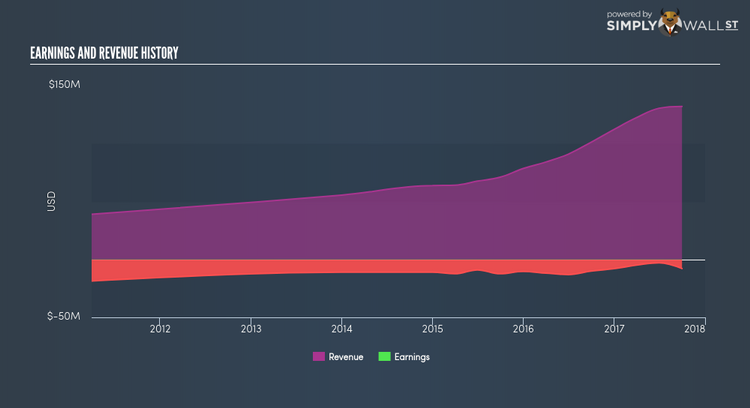Did Impinj Inc’s (NASDAQ:PI) Earnings Growth Outperform The Industry?

When Impinj Inc (NASDAQ:PI) announced its most recent earnings (30 September 2017), I did two things: looked at its past earnings track record, then look at what is happening in the industry. Understanding how Impinj performed requires a benchmark rather than trying to assess a standalone number at one point in time. Below is a quick commentary on how I see PI has performed. See our latest analysis for Impinj
How Well Did PI Perform?
To account for any quarterly or half-yearly updates, I use the ‘latest twelve-month’ data, which annualizes the most recent half-year data, or in some cases, the latest annual report is already the most recent financial year data. This technique enables me to examine many different companies on a similar basis, using the most relevant data points. For Impinj, its most recent trailing-twelve-month earnings is -US$7.88M, which, against the prior year’s level, has become less negative. Given that these figures may be somewhat short-term, I’ve determined an annualized five-year figure for PI’s net income, which stands at -US$10.23M. This suggests that, despite the fact that net income is negative, it has become less negative over the years.
We can further examine Impinj’s loss by looking at what the industry has been experiencing over the past few years. Each year, for the last five years Impinj’s top-line has risen by 17.87% on average, implying that the company is in a high-growth phase with expenses shooting ahead of revenues, leading to annual losses. Inspecting growth from a sector-level, the US semiconductor industry has been growing its average earnings by double-digit 12.64% over the prior twelve months, and a less exciting 7.63% over the past five. This means that, while Impinj is currently running a loss, it may have gained from industry tailwinds, moving earnings into a more favorable position.
What does this mean?
Though Impinj’s past data is helpful, it is only one aspect of my investment thesis. With companies that are currently loss-making, it is always hard to envisage what will happen in the future and when. The most valuable step is to assess company-specific issues Impinj may be facing and whether management guidance has regularly been met in the past. I suggest you continue to research Impinj to get a better picture of the stock by looking at:
1. Future Outlook: What are well-informed industry analysts predicting for PI’s future growth? Take a look at our free research report of analyst consensus for PI’s outlook.
2. Financial Health: Is PI’s operations financially sustainable? Balance sheets can be hard to analyze, which is why we’ve done it for you. Check out our financial health checks here.
3. Other High-Performing Stocks: Are there other stocks that provide better prospects with proven track records? Explore our free list of these great stocks here.
NB: Figures in this article are calculated using data from the trailing twelve months from 30 September 2017. This may not be consistent with full year annual report figures.
To help readers see pass the short term volatility of the financial market, we aim to bring you a long-term focused research analysis purely driven by fundamental data. Note that our analysis does not factor in the latest price sensitive company announcements.
The author is an independent contributor and at the time of publication had no position in the stocks mentioned.

